The End of the Road: Timberon's Unfinished Story
Remote New Mexico community balances infrastructure challenges with influx of newcomers

Joe Bob Shields navigates a Ford work truck through a maze of dirt roads, past the “no-tell motel,” and along the aging airstrip before he turns up into the hills that overlook Timberon, New Mexico.
He points out landmarks to Otis Price, who sits in the passenger seat and squeezes the grab handle above his head to ease the bumpy ride. That’s the number two tank, there’s the newest radio tower, and that’s so-and-so driving by in their beat-up truck, signals Joe Bob.
Today is Otis’s first day on the job as the new manager of the Timberon Water and Sanitation District (TWSD). Joe Bob, a long-time resident and Lead Field Operator at the water department, gives him a tour. There are over 200 miles of dirt roads in Timberon and he knows them well.
The pair stop at various pump-houses; little huts behind chain link fences that supply water to sections of Timberon. They are part of a network of leaky pipes and unkempt roads. Otis inherits a municipal system that is often at the receiving end of barbs and criticism, and not without reason.
On the Verge, Again
The mountain hamlet at the far-flung southern slopes of the Sacramento Mountains has seen boom and bust. A list of entrepreneurs, ranchers, and landmen staked their claim on Timberon over the years, sometimes with dire results. The place has been plagued by bankruptcy and mismanagement. But the potential in Timberon is as big as its footprint, about the size of Alamogordo, and the community teeters on the verge of a second renaissance.
A land rush is happening here again. Timberon’s cycle of ups and downs spawned a unique and resilient community that attracted a post-COVID wave of new residents. They are non-conformists, expats, nature enthusiasts, and those just looking to get away from it all. Affordable land and amenities, including a public pool, golf course, community center, and fishing ponds, add to the attraction.
Timberon’s ability to grow and reclaim parts of its celebrated history largely depends on its ability to fund and repair its crumbling infrastructure and aging recreation sites. Locals look to do that through grit, volunteerism, and a strong sense of community, while new management aims to right the ship at TWSD.
“We are kind of at the end of the road here. It’s not a place where people pass through,” says Don Wiklund, a resident and early investor in Timberon land. “To me, living in Timberon is like stepping back in time 40 or 50 years where life isn't quite as fast-paced. People are a little more friendly and look out for each other.”
The Wiklund Land Office is one of the first establishments you see upon entering Timberon atop one of its two paved roads. A large sign advertises mountain land over a picture of a bull elk. Don, his family and a handful of locals staff the place five days a week.
The office resides inside a small bardominium. A Starlink satellite internet receiver is perched on the roof. The building is an Old Hickory Shed brand, and it serves as an advertisement; purchase one just like it to go with your new tract of mountain land and make it a cabin or she-shed.
Inside, Amber Stubbs-Aydell swivels in a rolling chair before one of the desks where she and other workers manage the sales of Wiklund lots. She and her husband bought a tract five years ago and then moved in last year.
“We love Timberon even with the water issues,” says Amber. “I want to live here where the air is clean, where I'm healthy and happy…you just have to give up a few things sometimes.”
Timberon does not have cell service or a gas station. Residents urge visitors to mind their fuel gauge before embarking on the thirty-mile trip from Cloudcroft. They also recommend purchasing a pre-programmed walkie-talkie from one of two general stores if you plan to spend significant time here. Locals use radios to communicate. Repeaters bounce signals from high points around town. A few wifi hotspots dot the community as well.
Despite the lack of services, Amber says her land has doubled in value since they bought it. She and her husband live in an RV and power it with a mix of generators and solar panels.
“The only thing most people need to realize is that if you can’t get it here, you can get it sent here,” says Amber.
Potential buyers walk through the door. They are a young couple from El Paso. “We’re looking for something affordable, something that we could use as a recreational property…a place to get away, off-grid most likely,” says the husband.
Josh Wiklund joins the shoppers. Josh is a tall, slender man in his mid-30s and one of Don’s sons. He points to a large map on the wall that displays hundreds of half-acre tracts outlined in black ink. Some squares are filled-in to show pieces that have already sold. Looking at the map, it’s easy to imagine how Timberon could be its own city if every tract of land had a house on it.
“The resurgence really happened when COVID happened and people wanted to get away,” says Josh. After the initial wave of COVID migrants, an increase in tourism trickled down from Cloudcroft, with more people exploring the mountains. Some of those visitors found Timberon, bought land, told their friends about it, and their friends bought land, says Josh.
The Wiklunds settled Timberon by happenstance. Don, then a firefighter in El Paso, escorted a group of Boy Scouts to the mountains during the late 80s. They got lost during the trip, and Don found Timberon.
“There was no GPS. I thought I knew where I was going, and I was wrong…we were able to find somebody here to let us camp on their property,” says Don. “I was impressed by how nice this person was that allowed us to do that, and then how pretty it was. Why have I never heard of this place before? And I started coming back.”
Around this time, the North American Land Development Company went bankrupt. The company consisted of a group of investors who sought to develop Timberon into a resort-style getaway for families, hunters, and vacationers. Beginning in 1969, they divided 9,360 acres into 33 subdivisions that contained thousands of individual lots. Its vision was realized in part as the 70s and 80s are considered the heyday for the community. Planes were flying, golfers swung onto manicured greens, and vacationers danced amid the rustic-chic ambiance at the revamped Lodge.
But those times were fleeting, and the land development company fell victim to high interest rates and slow sales. “A lot of people who bought in and originally wanted the country club atmosphere, and when the developer went under, and the property owners association went under, the thought was this was a bad investment, this was a lost cause,” says Don. “So the prices got lower and lower and lower. If the prices get so low, people start to think there must be something wrong with it, but in reality, it’s just as beautiful, the terrain and the wildlife, as Ruidoso. It’s the same elevation.”
During the late 80s and early 90s, Don and a few others bought up lots left after the company’s bankruptcy. Gone were the powers to enforce restrictive covenants by the developers and the property association. Newcomers then enjoyed the cheap land and the freedom to reside in an RV, yurt, or mobile home, domiciles that were more regulated in the past. The restrictive covenants are still in place today.
“One of the covenants is you can’t keep your travel trailer on the property for over 160 days, but there’s people that do that all over the place. If you’re going to start going after one person, then you gotta go after this person, and this person, then this person, and it’s kind of like this snowball effect to where it’s kind of in this weird limbo state…” says Josh.
Today, ads on Craigslist, Facebook, tax auctions and faraway realtors proclaim cheap mountain land. Buy now, they say. A tour around Timberon reveals “for sale” signs tacked to juniper trees, and a quick search on Zillow shows more than 100 results. “I would say only fifty percent of the lots have easy access to all the services” says Don.
“A lot of the properties you look at it on paper, and it looks good. There's a map, but you don't know that the road was never finished. You don't know that utilities are a mile away. You don't know the terrain by just looking at a map,” says Don.
Before its demise, the land company sold Timberon tracts in a “pre-development phase” with plans to extend water, electricity and roads to outer areas of the community.
They never did.
Some of those undeveloped lots pop up for sale today, and Don urges people to do their research before buying a lot they can’t access.
Costly Repairs Coming Down the Pipe
“I know how hard you guys work. I've been in the trenches in the middle of the night in a foot of water, and it’s so damn cold your hands are shaking and you can’t even get your gloves off. I’ve been there. I know what it’s like,” says Otis Price. It’s an early fall morning at the Timberon Lodge and a group of TWSD employees gather to meet their new manager. “I think there’s a lot of things we can do to help alleviate the public image of the water department,” he adds.
Water is a hot topic in Timberon like in most high-desert mountain towns. A pile of debt, unanswered calls, and countless water leaks have plagued the department in years past. Public board meetings can often get contentious.
The roots of TWSD headaches stretch back to the land company. Pipes the developers installed decades ago were more suited for irrigation systems than modern residential and commercial use. Those thin pipes were laid into rocky ground without softer fill dirt to surround and cushion them. Years of rubbing against sharp stones or the weight of a truck pushing down on the pipes will break them. It’s a recipe that has caused thousands of leaks.
“These towns survive on water,” says David Cruey, Board Chairman of TWSD. “So every time we have a block, of course, we’re going in there and installing good pipe again. But now we have a patchwork of good pipe and bad pipe.”
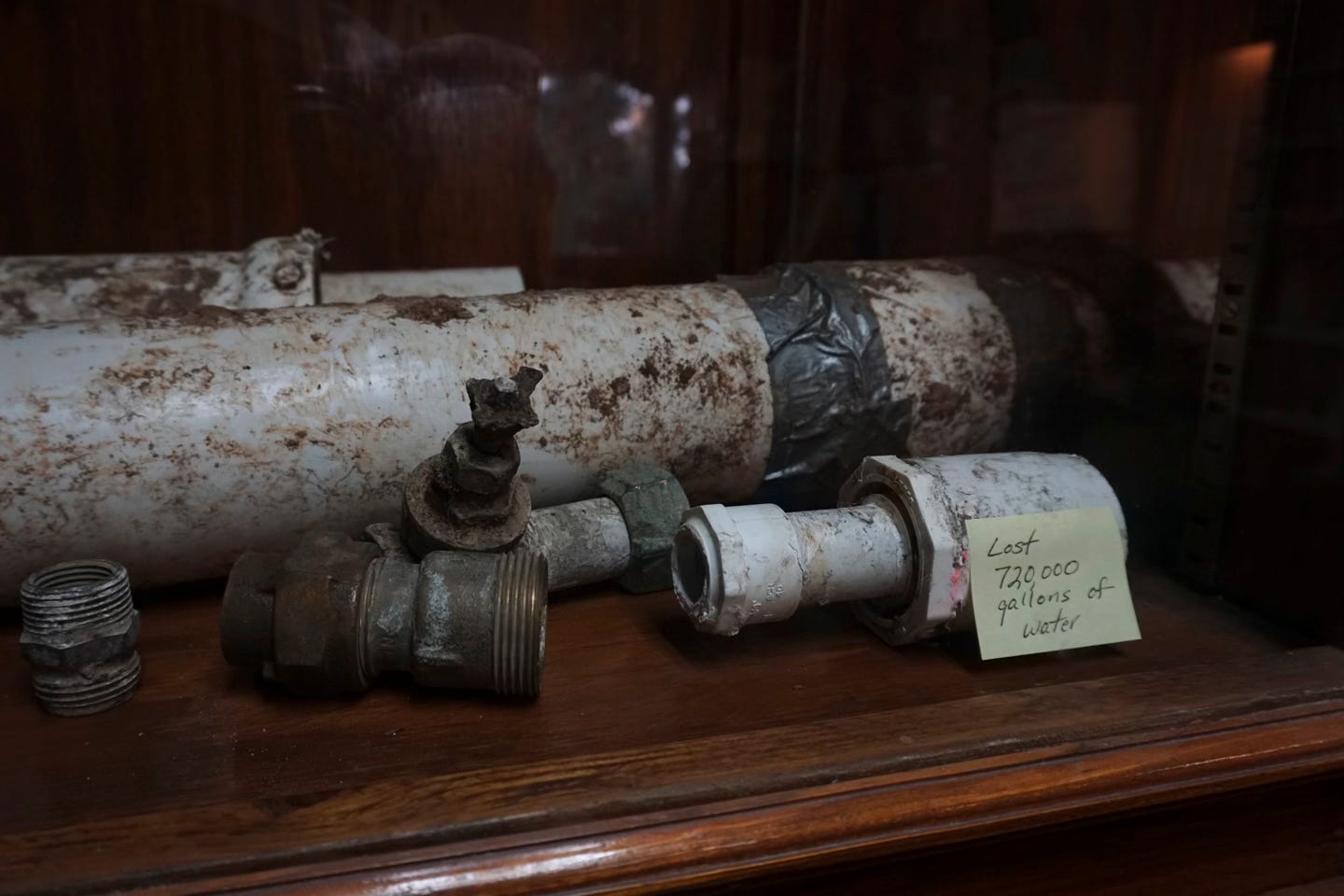
According to Otis, replacing 80 miles of old pipe with new will run around $24 million. “The running cost of replacing a mile of an engineered water system is roughly $300,000,” he stated in a recent Facebook post, part of his effort to increase transparency with the residents of Timberon.
“We walked into an accounting nightmare,” says Cruey in reference to the water board. People just weren’t doing their jobs and it got out of hand. You know, finding bills for $28,000 for this, $18,000 for that and it’s never been paid. It’s just been sitting there.”
TWSD gathers funds through its water meters and government grants. They supply water to around 650 customers according to Cruey. A base monthly water fee, including trash service, runs $91. Otis and the board hope to secure more grant funding to offset the costs of a new water system.
”None of this is going to happen overnight. It’s going to take a while to get the ball rolling, but in the meantime we’re working in the right direction,” says Otis.
The article continues after this brief Cloudcroft Reader sponsor message:
Close-Knit Community of Volunteers
Despite the water issues and bumpy roads (TWSD also maintains some of Timberon’s streets), the community continues to attract newcomers.
”In the eleven years that I’ve been here I have just seen it explode. Stuff that’s been on the market the past two or three years sells in a month. So it’s growing,” says Connie Shields.
It’s near closing time at Connie’s Deli where the restaurant’s namesake owner, Connie, has become a staple of the community. The deli stands on a hill above the main road into Timberon. A new dining room remains under construction off the back. It will ease congestion inside the little restaurant during the summer rush.
“They love to come up here and get out of the heat and see something green versus, you know, asphalt,” she says in reference to visitors from El Paso who make up much of Timberon’s clientele.
A steady stream of locals come through the door during this Sunday afternoon as shouts for a cherry milkshake pass from patron to cook. Pizzas are boxed to go, but the day's highlight is Connie’s pork and spaetzle special inspired by her time spent in Germany serving in the US Air Force.
Everything is made from scratch. Old bread transforms into croutons, and little goes to waste. Resourcefulness is required, says Connie, when a drive to the grocery store is a three-hour round trip.

Behind the restaurant, the land is bare. Charcoal spires remain from old stands of ponderosa pines, a reminder of last summer’s Oakmont wildfire, which marched within yards of Connie’s Deli. The workers recall the parking lot covered in a blanket of pink slurry from the aerial water bombers, but Connie did not close because someone had to feed the firefighters.
“They [wildfires] burn hotter because of the grass, and then that will get the trees,” says Kurt Preuss of the Timberon Volunteer Fire Department.
Inside the fire station, Lieutenant John Bufton unrolls paper maps and points out swaths of the community that burned in years past. The Oakmont Fire, the Pioneer Fire and the Timberon Fire are some reminders of the threat. Their marks on the landscape are still visible today. The warmer temperatures, tall grasses, and juniper groves increase the risk of fires here.
Efforts to curb that threat have been made. Timberon VFD operates from a new four-bay fire station. Its old station is home to a dedicated EMS team. Landowners like Don take advantage of state and federal grants to clear and thin overgrown vegetation that could fuel wildfires.
“There were slurry planes here doing drops and stuff,” says Don about the Oakmont fire last May. “The fact that it went into that area where they had thinned, and there wasn’t so much combustible material, they could get a handle on it and get it stopped.”
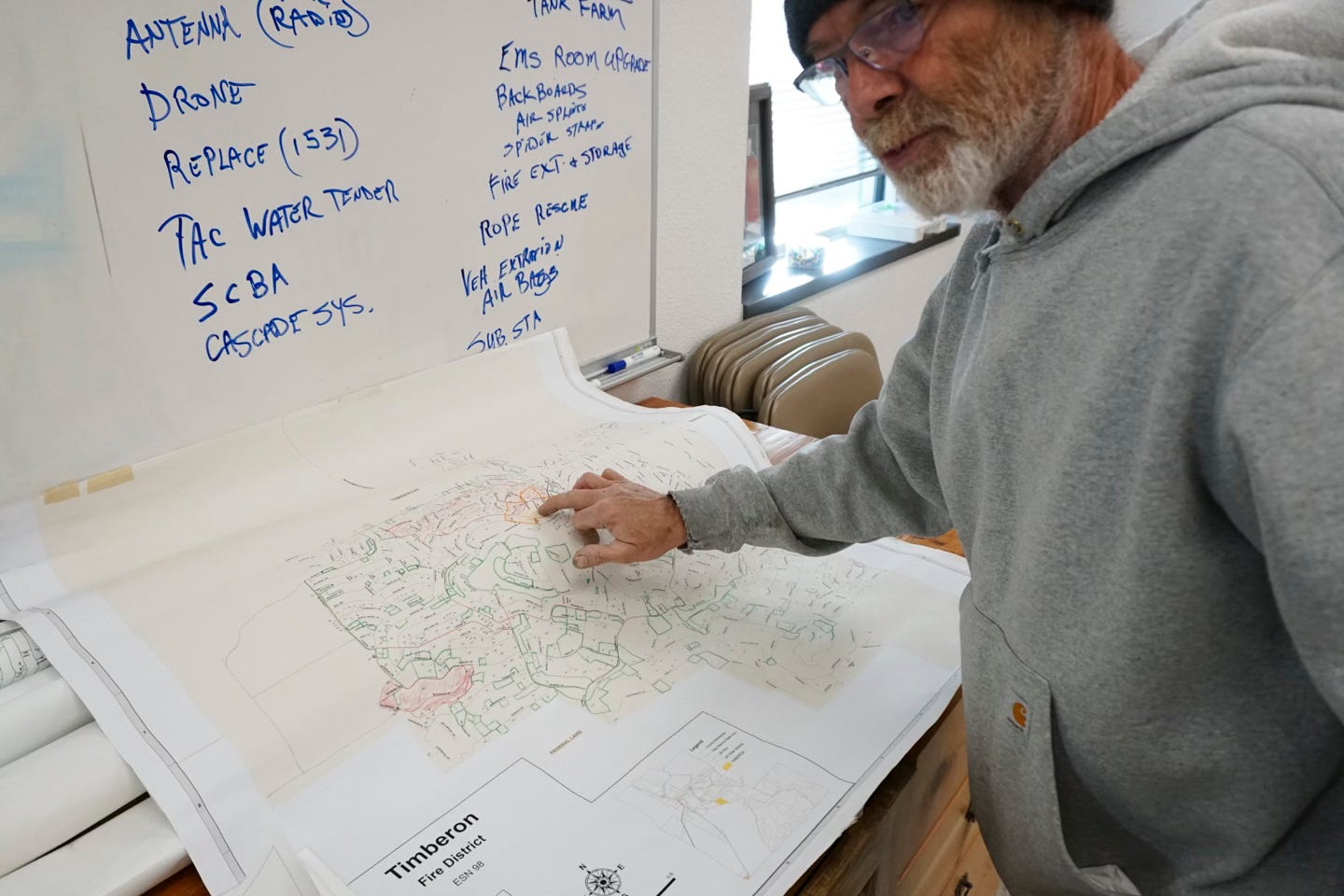
Locals watched the fire-fighting efforts from the balcony of the High Country Lounge and Grill, filming the planes as they passed. The bar and local eatery is perched atop a hill and overlooks the golf course. The parched, yellow grass of the fairways flows outward to a backdrop of green mountains to the north. Fifteen dollars pay the green fee for the nine-hole course, and players may choose to walk or bring their ATV to chase their ball from pin to pin. An extra ten dollars will rent a cart.
It’s Taco Tuesday at the lounge. Pictures of successful mountain lion hunts are swapped amongst patrons, as are talks of dogs on the loose and the upcoming karaoke night. Arrowheads and spear points lay fixed in yellowing epoxy on the bar top, artifacts from long-ago inhabitants of the southern Sacramentos. General Manager Neenah Williams stands behind the bar and weighs bottles of vodka in preparation for a busy evening.
“When I moved here, it was a lot of retired people, and then 2020 came, and it’s been growing, with younger people. I think a lot of people went that way in 2020 and wanted to get away from the cities and chaos,” says Neenah.
Long under the control of TWSD, the lounge is set to go under the control of Discover Timberon Inc., the community’s version of a chamber of commerce. The move is another in TWSD’s attempts to diverge itself from projects better suited for other groups while concentrating on water and roads, the most glaring community issues.
“I think this town really runs on volunteers. It takes a lot of people to come together,” says Nicole Masters, assistant manager at the lounge.
Timberon Neighborhood Watch, the Timberon Radio Relay League, and the Timberon Development Council are some volunteer organizations that fill gaps in the absence of a property owners association or strong municipal government.
They maintain parks, clean up roadside weeds, host holiday events, manage the swimming pool, lead community education classes, and the list goes on.
“We have paid auto bills for people whose vehicle has broken down. We have paid propane bills. We have paid water bills. When someone dies in the community, we have a bereavement that we give to the family. If anybody needs help with gas for medical, they can come to us, and we will help out. We use all the money we collect and put it right back into the community,” says Donna Gray-Haupt, a member of the Development Council and Timberon resident since 1998.
Time Will Tell
Timberon’s community Facebook group is one of the most active on the mountain, with more than 9,000 members. People post mountain lion sightings (which are fairly frequent), announce potlucks, and report suspicious activity.
A call to the sheriff elicits a response that can take up to an hour and a half if deputies drive up from Alamogordo. For that reason, residents in Timberon patrol their own streets. The words “neighborhood watch patrol” adorn the doors of locals’ personal vehicles. They carry radios, some with antennas that are feet long.
“They patrol every street, and if they see anything questionable, they’ll get a hold of the homeowner and make sure everything is good,” says Nicole Masters.
The county sheriff endorses the group. They host free movie nights and an annual garage sale. Ninety-five percent of the groups funding come from donations by local businesses and individuals. “No guns are flying off or anything like that,” says Ilene Ricketts, a bartender at High Country Lounge.
Below the bar and next to the windows that look out onto the expanse of evergreen mountains is a two-top table where Ken Carter sits and eats his tacos. He is a muscular man in his mid-50s. He traveled the state by foot, lived alone in the woods, worked sawmills, and didn’t have a phone. “Leave a message with the bartender,” he says for people who need to get a hold of him.
“When I was a kid coming up here I remember the airport having airplanes, and ultralights and helicopters sitting out there…they even had a tower person communicating with them as they were flying in,” says Ken.
His father purchased a four-acre parcel of Timberon during the 70s. “My dad was so proud of it. It was the first piece of property he had purchased in his life,” says Ken. He remembers the shiny belt buckle his dad wore with the word Timberon emblazoned in the metal.
“In 1979, on a weekend, you had close to 2,000 people out here. They were coming in on their little station wagons like Brady Bunch style, pulling their Airstreams behind them,” remembers Ken.
It’s memories like these that just a handful of Timberon locals lived all those years ago. It pains Ken to have witnessed the departure from those glory days. Now, decades later, new generations are discovering this eccentric place at the end of the mountains. They come during summers, swim in the pool, ride their ATVs, disconnect from their devices, and buy a piece of property.
“I think it’s just been one downturn and a long rediscovery,” says Don Wiklund.
Where the land company failed in its country club endeavor, the community endured, and people like Joe Bob, Otis, the Wiklunds, and those on the development council picked up the pieces.
“I’m really looking forward to putting my heart and soul into it,” says Otis. “As long as people care about the work they do, there’s nothing that can’t be accomplished.”
Time will tell if Timberon can realize its potential. Can its infrastructure be fixed? Will people keep coming? For now, things seem to point in the right direction.
“Five years from now, I think you’re going to see a lot more buildings and, hopefully, an improvement in the water system. That’s what we really need to work on,” says bartender Ilene Ricketts.
“And I would like to see a gas station.”
A correction was made on Dec. 15, 2024: An earlier version of this article mis-identified an individual in a photo caption. The person pictured is Lieutenant John Bufton of Timberon VFD, not Kurt Preuss.
A correction was made on Dec. 16, 2024: An earlier version of this article misspelled the name of the General Manager at High Country Lounge. Her name is Neenah Williams, not Nina.


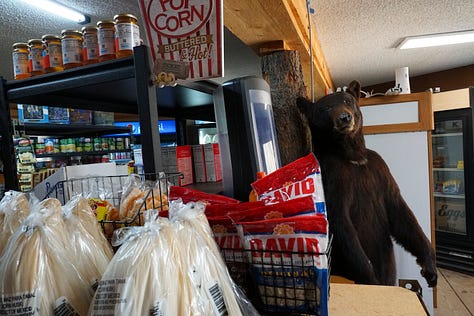



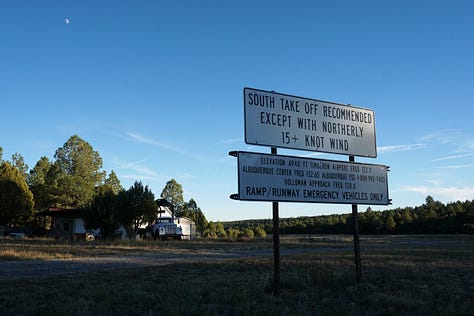
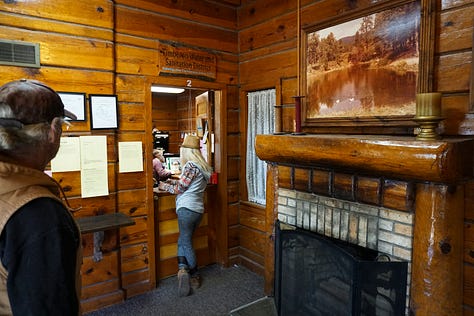
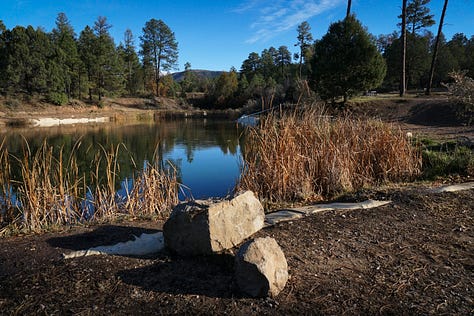
Cloudcroft Reader is proud to be sponsored in part by Future Real Estate.
575.415.4039 | Team@FutureRealEstate.com
Cloudcroft Reader is proud to be sponsored in part by Be in the Mountains Yoga.
Be in the Mountains Yoga, conveniently located in the Village Plaza off James Canyon Highway, offers Vinyasa Flow, Yin Yoga, Yoga Nidra, Restorative and Thai group classes, and private Thai yoga sessions. Book yours today.
Learn about sponsorship opportunities for your business in support of the Reader. Contact us for more information at sponsorship-info@cloudcroftreader.com
Cloudcroft Reader is proud to be sponsored partly by businesses like Off the Beaten Path, Future Real Estate, Cloudcroft Therapeutic Massage, High Altitude, Be in the Mountains Yoga, Otero County Electric Cooperative, and the Peñasco Valley Telephone Cooperative.
Let our over 1,800 e-mail subscribers and over 2,300 followers on Facebook see your support of local journalism. Have your business only one click away from our readers.
Our work is free to read—but not free to create. Make a pledge today, in any amount, and support local writers, editors, photographers, and designers.
Join your neighbors who keep our essential work going. Thank you to our Cloudcroft Stars:
John Bennett, Janyce Chesnut, Rhonda Grant, Chris Milya, Carla Moore, Jackie and Larry Pryor, Dorian Ramirez, Charles Ramay, John Snook, Aileen Duc, Mike and Marty Mills, Terry and Joann Means, Susan Booth, Cheryl Kaufman, Sara Sims, Guy Lutman, Hans Steinhoff, Herman Graffunder, Carol Stanfill, Kirk Cooper, Ann Davis, Steven G Henry, Sonnie Hill, Jean Ramsey, John Sarrels, Charlene Basham, Patti Howell, Waitt Family, Mario Romero, Craig and Dru Chapman, Hilda Gerardo Acuna, Jann Hunter, Don Stowe, Amy Parker-Morris, Leah Ross, Sally and Prentice Blanscett, Lyn Canham, Amy Dunlap, Linda Rawson, Roger and Cindy Walker, Renee Hays, Brian Risinger, Charles Day, Mark Tatum, Sam Coats, Brian and Stephanie Collins, Dixie Rogers, Cheri Hass, Laurel & John Walters/Cronin, David and Anne Marie Larsen, DONA Sennett, Summit Supply, Amy Felix, Barbara Pugh, Justin Damron, Dana Dunlap, Dennis Magill, Rod & Barbara Slaton, Diana Lehr, Lyn Canham, George Marshall, Rand Carlson, Andrea Ohare, Diana Lehr, Diane McMahon, Bob & Donna Shepherd, Glena Muncrief, Shelby Manford, Deborah Cole, Mike and Stacey Hyman, Linda Hamilton, Gail Overstreet, Andrew Colglazier, Julie and Eric Pearson, Terry Schul, Rand Carlson, Amy Coor, Suzannah Cox, Roberta Haecker, Barbara and Bryan Johnson, Gina Sweeny, Lynn Owen, Judith Langlois, Diane Thomas, Laryssa Alvarez, Gina Sweeney, Lynn Owen, Brian Risinger, Craig Turner, Carl Wyatt, Betty Sheker, Carie Mckinney, Rebecca Barrows, Judith Langlois, Jim & Francis Curtis, Cheri Hass, Kurt Kochendarfer, Stan and Ginger, Alexandra Carilli, Greg Switzer, J & S Blanchett, Jan Graffunder, Barbara Hoskins, Martha & Larry Dahl, Linda Meyer, Tom McLaughlin, Jessie Willett, Heidi Gibbons, Karen Highfill, Herman Graffunder, Michael Johnson, Anonymous, Cloudcroft Chamber of Commerce, Earle & Dixie Neill, Tracy Lockhart, Bill Sandusky, Sandra Barr, Pat Ray, Robert Mace, Mary Bott, Barbara Scheuter, Cynthia Buttram, Andra Sanders, Tod Taylor, Donna G Casey, Kathy Lee Alvoid, Valerie Stagaman, Nancy Penner, Gerardo Acuna, Marietta Crane, Randy Melton Electric, Michael London, Nikki Castle, Joan Nussbaum, Rachel Truex, Cheryl Puterbaugh, Mark Ferring, Lisa & Greg Spier, Kay Magill, Anne Spier, Mark Tatum, Jonathan Coker, Carl Milburn, Judy Gordinier, Glenn Edwards, Anonymous, John Sarrels, Kenna Darling.









Drew, please contact me, Jack Ratley, President of the Timberon Neighborhood Watch regarding a correction in this story. 931-305-9848